Who was the “klokker”?
In this article, I will look at the Norwegian title “Klokker”When searching for ancestors in Norway, we sooner or later come across the word “klokker”. Searching a dictionary you might find it to be plural of “klokke” i.e. clock or watch. However, it may be a title and it is the person with the title Klokker we will look at in this article.
A “klokker” is a layperson who is assisting the minister in preparing, and during, the service.
I have sometimes seen the term “klokker” be translated into “sexton” in English. Having looked at the definition of “sexton” I find it to not be a fitting translation. (Wikipedia)
I find the English words “Verger” or “Sacristan” to be more fitting translations as the duties of these positions are more like the Norwegian klokker.
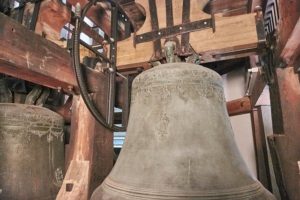 The word “klokker” can be translated to “bellringer”. This function originates in the middle ages when the bells chimed twice a day to call to prayer. Before the Lutheran reformation, small bells were also used inside the church in connection with communion (Wikipedia).
The word “klokker” can be translated to “bellringer”. This function originates in the middle ages when the bells chimed twice a day to call to prayer. Before the Lutheran reformation, small bells were also used inside the church in connection with communion (Wikipedia).
Initially, the klokker did ring the churchbells to call to service. Many churches had, in addition to a klokker, also a “kirketjener” i.e. a church servant. Many places it was the church servants’ job to ring the bells. Some churches had bellringers in addition to church servant and “Klokker”. Today many churches have motorized bells, often engaged by a timer, so the only ringing that has to be manually initiated is the 3 times 3 bell strikes that ends the church service.
The “klokker” also had and still has other duties in the preparation of the church service. He lights the lights in the Church and the candles on the altar. He prepares the vessels for the communion and water for baptisms. When hymnals came into common use, the klokker would put up the numbers of the hymns on a board in the church.
The Church ordinance from 1607 states that the minister and the “klokker” should gather the children in the parish once a week to teach them the catechesis.
Sometimes the “klokker” is called “Kirkesanger → Church singer” This is from the time before pipe organs became common in the churches. He was the one who led the congregation in the singing of hymns.
In earlier church rituals the “klokker” used to read prayers (“klokkerbønn”) at the opening and at the end of the service.
In a time before modern communications, the minister often lived far from many of the localparishes and could not be summoned on short notice. In these cases, the “klokker” often officiated at the interment ceremony. The next time the minister visited the local parish, he would perform the final committals (“Jordfestelse”) at the grave. See Three dates of death.
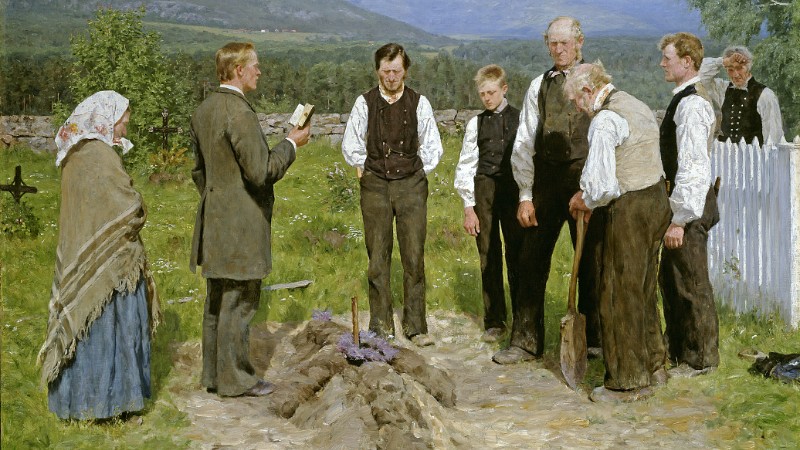
In the featured photo from Vestnes Church (built 1872) we see the “klokker’s” chair to the right, in the cubicle seen just behind the piano. Today the “klokker’s” duty also include being sound techician for the PA-system that most churches are fitted with.
“Klokkerboken”
Prior to 1812 Norwegian church books were recorded as the minister saw fit((Lajos Juhasz, “Kirkebøkene i Norge” Norsk slektshistorisk tidskrift XXVI (1978):pages 81-99)).
Singular: Klokkerbok, plural: Klokkerbøker
The Digitalarkivet calls these records “Sexton’s book” or “Copybook”
The order about keeping “klokkerbøker” was not repeated in the new regulations of 1820, so some parishes discontinued the practice. These parishes reintroduced the “klokkerbok” in 1890 after the Norwegian bishops encouraged this((Gunnar Thorvaldsen Håndbok i registrering og bruk av historiske persondata Tano Aschehoug (Oslo) 1996 page 84)).
If available, you should have a look in both the “Ministerialbok” and the “Klokkerbok”. Often the minister traveled around in a big parish and left his copy of the church book at the rectory. He had to resort to lose leaves to take notes of his action. Later he would copy these notes into the church book. The “Klokker” normally recorded the information directly into his book. If there is a divergence between the two copies I usually consider the “klokkerbok” as the most reliable. The “klokker” lived in the local community (local parish) and often knew the people in the congregation better than the minister.
Click this link for a detailed look at Norwegian Church records.



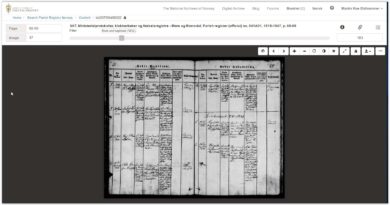
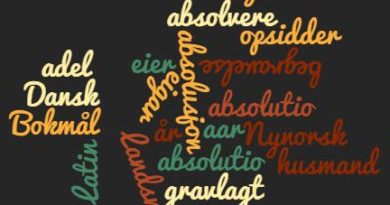
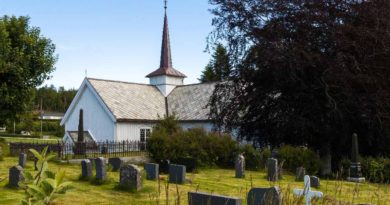
Great article, Martin. Now i have a much better understanding of this person’s role in the church. I hadn’t thought of the Klokker’s copy as being more reliable – sure makes sense to me now
Thanks for your kind words Linda. I am glad you found the article interesting.
Thank you for this article. It is helpful, as you always are.
Thanks for visiting and for the kind words about my blog Ann.
My grandfather was the klokker in his farm church – Bethania Lutheran Church – in eastern North Dakota. Some of his functions were to lead prayers and singing before the traveling minister arrived from one of the other churches in their parish. If the weather got too bad for the minister to travel, as klokker, then grandpa as klokker would lead the service in place of the minister. Communion was not a problem because in the churches in eastern North Dakota that I knew or attended as a member, communion was only served 4 times a year (we joked that it was held then whether we needed it or not). My grandfather was also one of the three men elected as Deacons when Bethania Lutheran Church was organized at a meeting on January 11, 1900.
Thanks for visiting and for your most interesting comment Byron. Fascinating to lear about the klokker’s duties in North Dakota. Was he called “klokker” or did they have an English word for it?
It was Klokker. These congregations still used Norwegian exclusively in their service at least until my grandfather and grandmother died in 1915 and 1919. All my aunts and uncles were confirmed in Norwegian also. My home church in the city had Norwegian service once a month until about 1946. The chapel at the local nursing home had Norwegian services every Sunday until I finished high school in 1951 and these services were broadcast by outside speakers and could be heard a least a block away.
My ancestor, great-great grandfather was klokker and also listed as kirkesanger on island of Vega part of Bronnoysund around 1860,Also listed as teacher (forgot Norwegian term)
Thanks for visiting my blog Ed and for your interesting comment. As a teacher he might have been “skolelærer”.
Always informative!! Like to read both books when available as I think the klokker book gives insight into pronunciation of names and farms. Records in Oppland come to mind . . .Minister wrote Sigrid, Marit . . klokker wrote Sigri, Mari.
Thanks for commenting and kind words Trudy. I haven’t thought of the different spelings of names by ministers and “klokkere”. I will certainly keep that in mind.
Thanks so much! I have seen that term and wondered about it. Another word I’ve come across a few times in the digital archives is “dragon,” which according to Google translate, means dragon! That can’t be right… would you know what it this word refers to?
Thanks for visiting and for your kind words Cathy. The Dragon is spelled Dragoon in English and were originally a class of mounted infantry, who used horses for mobility but dismounted to fight on foot.
My great grandfather Martin Olai Hansen was skolelærer, kirkesanger, and sometimes listed as klokker in Hof and later Balke parishes in Ostre Toten from 1880-1891. It’s good to see an explanation as to what his duties entailed.
At age 36 he left his wife and 7 children in Norway, and came to the US to study at the Augsburg Seminary in Minneapolis, Minnesota. He was ordained in October 1893, and became the pastor of 3 churches. Shortly after he became a pastor, it was discovered that he had fathered an illegitimate child (my grandfather) with a young girl while he was a student in the seminary. A big scandal ensued, which involved a lot of intra-church intrigue for 3 years. In 1897, he attempted to blackmail a young widow, threatening to expose their affair unless she paid him $1,500. He was arrested for that. In 1898, he deserted his family (who had joined him in the US in 1894.) That resulted in him spending almost a year in the country jail (1900-1901). A few years after his release, he again abandoned his family, going to North Dakota to work for the State Enforcement League, turning in violators of the North Dakota liquor laws and colleting a $50 reward for everyone found guilty. Everywhere he went he left a paper trail of bad debts and other bad behavior.
So far, I’ve collected about 300 newspaper clippings about him, and I’m working on a book about his life and times.
Hello Greg
Thanks for visiting and for commenting!
You really have an interesting story to share. You may say that your G-Grandfather was not what we think of as a mainstream “klokker” I have read stories about “klokkere” who was reprimanded by the minister for making noise during the sermon and one even was fined for selling moonshine. This is however, somewhat dull in comparison to your ancestor’s life.
If you plan to put your book out in the public, you must send me a copy and I’d be happy to present it here on the blog.